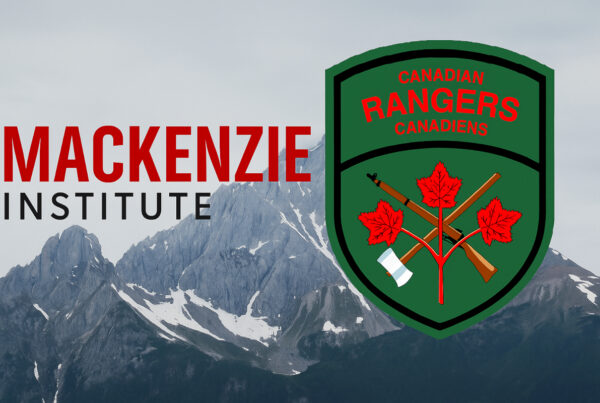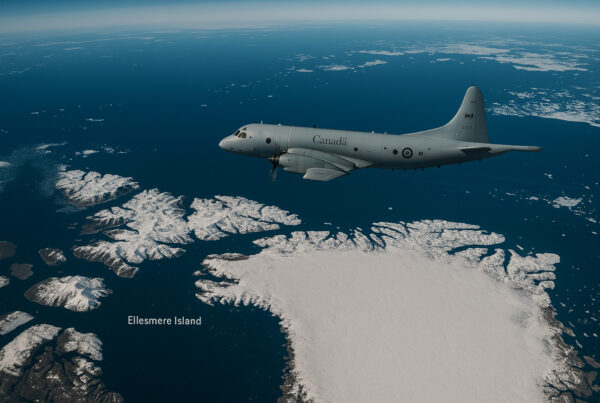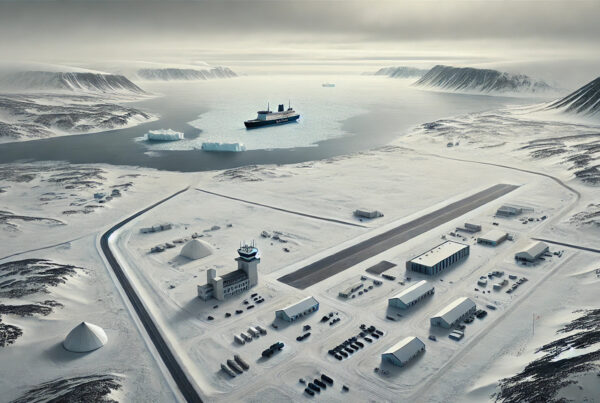The show of force and provocation
(The Second of Five Articles)
Maxim Starchak is currently a Fellow at Centre for International and Defence Policy at Queen’s University in Kingston, Ontario, Canada. He has a PhD in Political Science, and an MA in International Relations from the Irkutsk State University in Russia. Please see a more complete biography at end of the article
The confrontation development between NATO and Russia in the spirit of the Cold War is also traced in the show of force and military provocations of both sides. Russia increased the number of flights near the borders of NATO countries in 2014. Russian military aircraft began flying in the airspace over the Baltic, the North Sea and the North Atlantic. Activity of unidentified submarines near the territorial waters of the Baltic States and Northern Europe was noted almost monthly. In 2014, NATO intercepted 442 Russian aircraft, which is 50% more than in 2013.xxiv In 2015, there were more than 400 of these interceptions. Russia, in turn, has recorded an increase in the intensity of NATO air reconnaissance at its borders some three and half times, and the sea – one and a half times between 2013 to 2017.xxv
Conflict escalation between Russia and NATO is demonstrated by the increase and scale of combat and operational training on both sides. Since 2013, Russia has increased the intensity of military training by 3 times, and the number of troops involved in strategic exercises by 10 times.xxvi In 2017, Russia conducted around 4 thousand drills. However, a major concern for NATO is the increase of the number of “sudden exercises” of the kind which saw the takeover of Crimea successfully carried out. Over the past five years, the number of such exercise increased to 39, while in the previous years it was averaged just sevenxxvii. In response, NATO also increased the number of operational and combat training exercises from 282 in 2014 to 548 in 2017xxviii. The number of joint NATO exercises with Ukraine is also increasing. In 2013 there were 3, in 2014 – 8, in 2015 – 12, in 2018 – 23.xxix
Of note as well, the size and scale of military exercises on both sides has been growing. For each party, they are the largest since the Cold War. Russia held “sudden exercises” in the Arctic region with 80 thousand soldiers taking part in March 2015. NATO held exercises in Eastern Europe in June with 15 thousand soldiers from 19 countries taking part. The Russian exercises “Centr-2015” in September 2015 involved more than 95 thousand of personnel and 7 thousand military units.xxx In response NATO held from October till November the largest exercises “Trident Juncture-2015” involving more than 36 thousand soldiers from 30 states and 230 military units.xxxi By 2018, the scale of the exercises continued to increase. For Trident Juncture 2018 NATO deployed 45 thousand soldiers, sailors and marines, over 60 large ships, 120 aircraft and 10 thousand vehicles near Russian border.xxxii In 2018 Russia claimed to hold its largest war games since the Cold War, “Vostok” involving almost 300 thousand soldiers, 36 thousand tanks, armored personnel carriers and other vehicles, plus more than 1 thousand helicopters, aircraft and drones.xxxiii
The possible use of nuclear weapons brings back the Cold War times as well. Strategic bombers TU-95MS and TU-160 capable of carrying nuclear weapons are involved in the provocations of the air borders of NATO countries. Besides, in some exercises Russia uses mobile nuclear missile systems, strategic aviation and strategic submarines. In some exercises NATO also used a destroyer capable of carrying nuclear-capable Tomahawk cruise missiles, antisubmarine aircraft Lockheed P-3 Orion-SI, which are also nuclear-capable, as well as B52 strategic bombers.

In such exercises, each party simulates a military action from the other side. Russia simulates a confrontation with NATO forces in the Arctic and the Far North, or Kaliningrad, or Crimea, or on the borders with the Baltic States. NATO in turn simulates the response to the seizure of the Baltic States and Poland.
Most experts do not believe that Russia is going to attack the Baltic countries. Even the most conservative experts say that a Russian attack on the NATO states is impossible.xxxiv But the reality can be different from a military analysis or planning. Nobody expected the takeover of Crimea or parts of Ukraine either. It is difficult to say what events will prompt to the next Russian military intervention.
Currently, the quality and size of the recent war games conducted by Russia show the strength and confidence of using the Armed Forces if needed. At the same time the reaction of the NATO military is tested. NATO, of course, responds in kind to Russia’s challenges. However, some actions of the parties seem to be overly dangerous and could lead to a real risk of military conflict; in particular, the non-stop mutual provocations in the air pose a serious risk of accidental miscalculation. In April 2015, a Russian SU-27 fighter came perilously close to the American RC-135U in the Baltic Sea. Then again, the Russian side did not like the “provocative and aggressive” actions of the American destroyer “USS Donald Ross” in the Black Sea so scrambled a fighter bomber SU-24M which made several low level ‘attack runs’ at the Ross. In 2017, an F-16 Polish air force flew beside the plane on which Russian defense Minister Sergei Shoigu was a passenger. On November 2018, a Russian Tu-142 patrol aircraft dangerously approached the American USS Mount Whitney vessel on the Norwegian Sea.xxxv Unexpected confrontation is a sensitive and dangerous issue. That is why the Finnish president Sawlï Niinistё proposed to Russian President Vladimir Putin banning flights over the Baltic Sea with ‘switched off’ transponders. Some consider this is mere formality. Recognition of aircraft does not reduce the risky activity of aircraft or provocations next to NATO borders. Predictably, this proposal was not accepted by NATO either.
The military activity of both sides to carry out reconnaissance both on the water and in the air continues. Confrontations continue. A separate agreement on acceptable actions and their scope, like those two signed by China and the United States in 2014 to prevent armed clashes, may be a reasonable undertaking or both Russia and NATO.
Biography
Maxim Starchak, in addition to his PhD in Political Science, and an MA in International Relations, passed postgraduate courses in MGIMO (University) of the MFA of Russia, CTBTO Preparatory Commission in Vienna, Belfer Center for Science and International Affairs at Harvard University. In 2013-2015 he was a Research Fellow and Editor of the “Security Index” journal at PIR Center; also in 2013-2014 a Research Fellow at the Military Economy Department of the Gaidar Institute for Economic Policy. During 2011-2014, he was an expert at the Eurasia Heritage Foundation. In 2011- 2013, he was a Research Fellow at Institute for US and Canadian Studies and Executive Director of the Center for Strategic Estimates and Forecasts, which founded an International Expert Council on cooperation in the Arctic. In 2011 he was Editor-in-Chief of the journal “Big game: politics, business, security in Central Asia”. In 2009-2013, Expert on the “Security Index in Central Asia” project, at the Institute of Political Solutions (Kazakhstan). In 2010-2012, Head of Analytical Directorate at the Foundation for advanced studies “Bastion’. In 2008-2010, a Council Member of the Siberian Centre for security and nuclear nonproliferation. In 2007-2010, Coordinator of the Russian Youth Association for Euro-Atlantic Cooperation. In 2006-2011, Vice President, Head of the Research Group on International Security and Conflicts at Russian Political Science Association. In 2006, he was also the co-founder of Youth Department at Russian Political Science Association.
In 2013-2014, he was author and editor of PIR Center White Paper “Towards nuclear disarmament: NTP article VI and Implementation of the 2010 Review Conference Decisions”. In 2014-2015, Executive Editor of the
Conference Proceedings of III & IV Moscow Conference on International Security of the Ministry of Defence of Russian Federation. In 2014-2015, Working Group Member from Russia for preparation of the BRICS Think Tanks Council report (section “international peace and security).
Since 2010 he has been a permanent member of the Expert Council of the annual all-Russian essay competition on NATO-Russian relations of the NATO Information Office in Moscow and Information Centre for International Security. He has received academic and public awards and grants from: MGIMO-University, Moscow State University, Institute of Oriental Studies, JSC “Rosatom”, Eurasian Development Bank, Russian Political Science Association, Federation for Peace and Conciliation, National Committee on BRICS Research, NATO Information Office and EU Delegation in Moscow.
Current Interests/Research:
· Russian defence policy;
· NATO-Russia relations; and
· nuclear disarmament and arms control.








